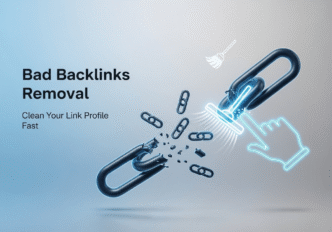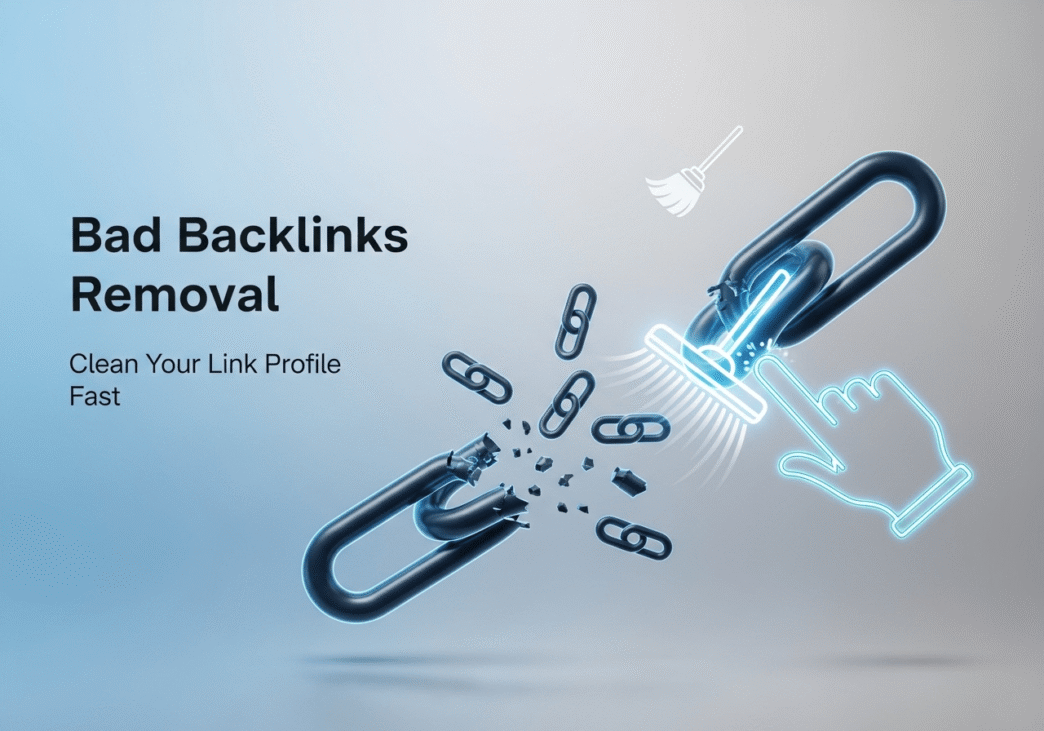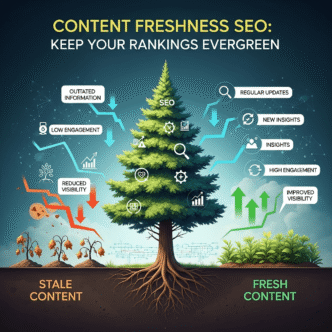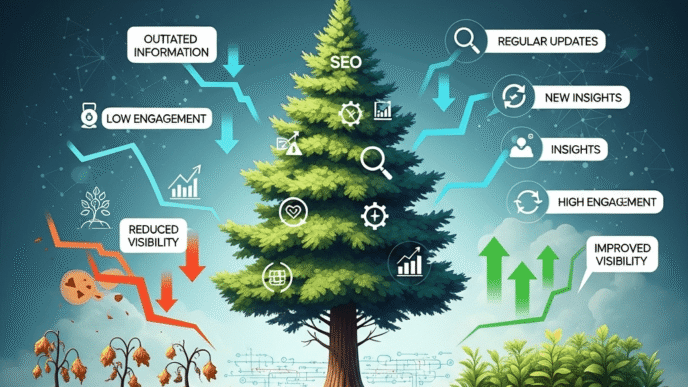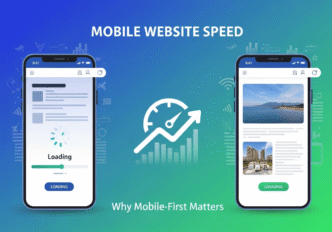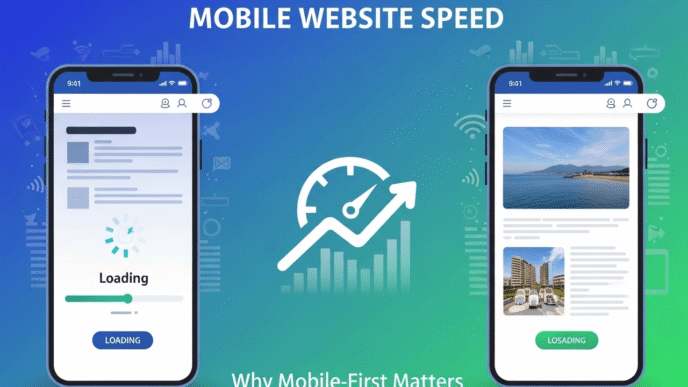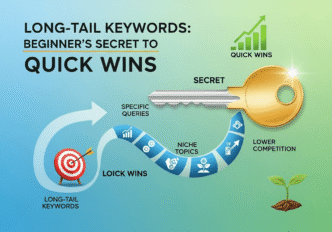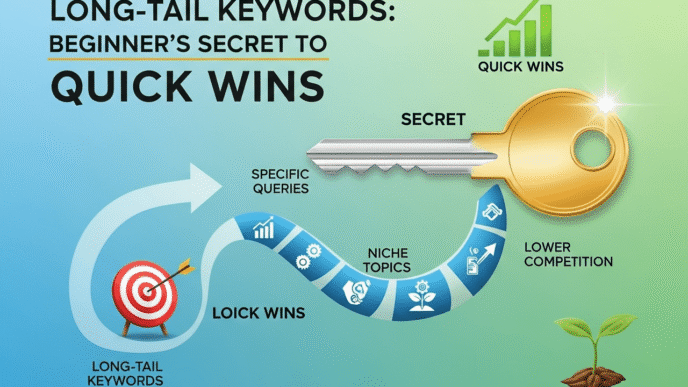Your website’s ranking just plummeted overnight, and you’re staring at your analytics dashboard like it personally betrayed you. Sound familiar? You might be dealing with the SEO equivalent of food poisoning – bad backlinks that are slowly poisoning your search engine rankings.
Here’s the harsh reality: not all backlinks are your friends. Some are digital vampires, sucking the life out of your SEO efforts faster than you can say “Google penalty.” The good news? Bad backlinks removal isn’t rocket science, and you don’t need a PhD in computer science to clean up your link profile.
Whether you’re dealing with toxic backlinks from shady link farms, spam links that appeared out of nowhere, or the aftermath of negative SEO attacks, this guide will walk you through everything you need to know about identifying, removing, and preventing harmful links from destroying your hard-earned rankings.
Think of this as your digital detox program – we’re going to clean house and get your website back to fighting fitness!
Table of Contents
Toggle
Why Is Bad Backlinks Removal Critical for Your SEO Success?
Google’s algorithm has become incredibly sophisticated at detecting toxic backlinks and penalizing websites that have them. It’s like having a bouncer at your website’s front door – except this bouncer has zero tolerance for troublemakers.
Bad backlinks removal matters because Google evaluates your website partly based on the company it keeps. If your site is linked from spammy, low-quality, or irrelevant websites, Google assumes you’re guilty by association.
The consequences of ignoring harmful backlinks can be devastating. You might see gradual ranking drops, sudden traffic plunges, or complete removal from search results. It’s like watching your digital empire crumble one bad link at a time.
Understanding what backlinks are and why they matter helps you appreciate why cleaning up toxic ones is so crucial for long-term SEO success.
How to Remove Bad Backlinks from Google: Understanding the Basics
Toxic backlinks come in many flavors, but they all share common characteristics that make Google’s algorithm uncomfortable. Think of them as the sketchy characters hanging around your website’s neighborhood.
Common Types of Harmful Backlinks:
- Links from adult or gambling sites (unless you’re in those industries)
- Spammy directory submissions with no editorial oversight
- Comments spam on irrelevant blogs and forums
- Links from private blog networks (PBNs)
- Paid links that violate Google’s guidelines
- Links from hacked or compromised websites
- Reciprocal linking schemes and link exchanges
The key to effective link cleanup is understanding that not every low-authority link is necessarily bad. Context matters more than pure metrics.
Pro Tip: “Focus on relevance and editorial context rather than just domain authority scores. A natural link from a small, relevant blog in your industry often carries more value than a manipulated link from a high-authority site.”
Identify and Remove Toxic Backlinks Guide: Step-by-Step Process
Step 1: Conduct a Comprehensive Link Profile Audit
Before you can clean up spam links, you need to know what you’re dealing with. This is like taking inventory before organizing your closet – you can’t clean what you can’t see.
Essential Tools for Link Analysis:
- Google Search Console (free and authoritative)
- Ahrefs or SEMrush (comprehensive paid options)
- Moz Link Explorer (beginner-friendly interface)
- Majestic SEO (specialized link intelligence)
Data Collection Process:
- Export backlink data from multiple sources
- Combine and deduplicate the data
- Sort links by various quality metrics
- Create categories for different types of links
Step 2: Identify Toxic Backlinks Using Quality Indicators
Red Flag Indicators for Harmful Links:
- Spammy anchor text (keyword stuffing, unnatural phrases)
- Links from unrelated industries or topics
- Sites with thin, duplicate, or auto-generated content
- Multiple links from the same domain with identical anchor text
- Links from sites with adult content, gambling, or pharmaceuticals
- Footer or sidebar links that appear site-wide
- Links from domains with suspicious TLDs (.tk, .ml, .ga)
Quality Assessment Criteria:
| Factor | Good Link | Bad Link |
|---|---|---|
| Relevance | Highly relevant to your industry | Completely unrelated topic |
| Content Quality | Original, valuable content | Thin, duplicate, or spun content |
| Link Placement | Editorial, within content | Footer, sidebar, or hidden |
| Anchor Text | Natural, varied phrases | Over-optimized, spammy keywords |
| Site Traffic | Active user engagement | Low or no organic traffic |
| Domain Age | Established domain history | New domain with instant links |
Step 3: Remove Spam Backlinks Hurting Rankings Through Direct Outreach
Once you’ve identified toxic backlinks, your first line of defense is direct removal through webmaster outreach. This is often more effective than the disavow tool because it actually removes the links rather than just asking Google to ignore them.
Effective Outreach Strategy:
- Find contact information for the website owner
- Craft polite, professional removal requests
- Provide specific details about the problematic links
- Follow up once after 2-3 weeks if no response
- Document all outreach attempts for records
Sample Link Removal Email Template:
Subject: Link Removal Request - [Your Domain]
Hi [Webmaster Name],
I hope this email finds you well. I'm reaching out regarding a backlink from your website [their domain] to our site [your domain].
After reviewing our link profile, we've identified the following link that we'd like to have removed:
- Linking Page: [URL]
- Linked Page: [Your URL]
- Anchor Text: [Text]
We believe this link may not align with current SEO best practices and would appreciate its removal to maintain both of our sites' quality standards.
Could you please remove this link at your earliest convenience? I'd be happy to provide any additional information you might need.
Thank you for your time and consideration.
Best regards,
[Your Name]
[Your Title]
[Contact Information]
Google Disavow Tool Step by Step: Your Nuclear Option
When direct outreach fails or isn’t practical, the Google disavow file becomes your weapon of choice. Think of it as telling Google, “Hey, I know these links exist, but please don’t count them against me.”
How to Use the Disavow Tool Properly
Step 1: Prepare Your Disavow File Create a simple text file (.txt) with the URLs or domains you want to disavow. The format is crucial – Google is very particular about how this file should look.
Disavow File Format Examples:
# Remove specific pages
http://example.com/bad-page.html
https://spamsite.com/link-to-my-site/
# Remove entire domains
domain:badsite.com
domain:spamlink.net
Step 2: Access Google’s Disavow Tool Navigate to Google Search Console, select your property, and find the disavow tool under the “Security & Manual Actions” section.
Step 3: Upload and Submit Upload your properly formatted disavow file and submit it. Google will process the file and begin ignoring those links in future crawls.
Critical Disavow Tool Guidelines
Do’s:
- Be conservative – only disavow clearly harmful links
- Use domain-level disavows for entirely bad sites
- Include comments explaining your reasoning
- Keep records of all disavowed links
- Monitor results over several months
Don’ts:
- Disavow links just because they have low authority
- Submit files with formatting errors
- Disavow competitor links (it doesn’t work that way)
- Use the tool as a first resort before trying outreach
- Expect immediate results – it takes time
Pro Tip: “The disavow tool is powerful but should be used sparingly. Google’s algorithm has become much better at identifying and ignoring low-quality links automatically. Only disavow links that are clearly manipulative or harmful.”
Clean Up Bad Backlink Profile: Advanced Strategies
Link Penalty Recovery: Getting Back in Google’s Good Graces
Link penalty recovery requires a systematic approach that goes beyond just removing bad links. You need to rebuild trust with Google through consistent, high-quality practices.
Recovery Action Plan:
- Complete comprehensive link cleanup of all toxic links
- Submit detailed reconsideration request if manually penalized
- Improve overall content quality and user experience
- Build new, high-quality backlinks through legitimate methods
- Monitor rankings and traffic for gradual recovery signs
Case Study: E-commerce Recovery Success An online electronics retailer saw their organic traffic drop 75% after a major algorithm update. Analysis revealed 2,300+ spam links from PBNs they’d purchased years earlier.
Recovery Process:
- Identified and documented all toxic backlinks
- Attempted outreach to 400+ webmasters (12% success rate)
- Disavowed remaining toxic domains and URLs
- Focused on earning legitimate links through product reviews
- Created helpful buying guides that naturally attracted links
Results: After 8 months of consistent bad backlinks removal and quality link building, organic traffic recovered to 110% of pre-penalty levels.
Negative SEO Protection: Defending Against Attacks
Negative SEO involves competitors deliberately building toxic backlinks to your site to harm your rankings. While Google claims to handle this automatically, proactive monitoring helps catch issues early.
Protection Strategies:
- Set up Google Alerts for your brand and domain
- Monitor backlink profiles weekly using SEO tools
- Watch for sudden spikes in low-quality links
- Maintain detailed records of your legitimate link building
- Report obvious negative SEO attacks to Google
Negative SEO Red Flags:
- Sudden appearance of hundreds of spammy links
- Links from adult sites (if you’re not in that industry)
- Anchor text attacks using your brand name negatively
- Links from hacked or compromised websites
- Patterns suggesting automated link building
Toxic Backlinks Prevention: Building Long-Term Link Health
Creating a Sustainable Link Cleanup Strategy
Monthly Link Health Checkup:
- Review new backlinks acquired in the past month
- Analyze any concerning link patterns or sources
- Update disavow file if necessary toxic links appear
- Monitor competitor link building activities
- Document legitimate link building efforts
Quarterly Deep Dive Analysis:
- Comprehensive audit of entire link profile
- Evaluation of link building strategy effectiveness
- Assessment of anchor text distribution
- Review and update link building guidelines
- Analysis of industry link building trends
Harmful Backlinks Early Warning System
Automated Monitoring Setup:
- Configure alerts in Ahrefs, SEMrush, or similar tools
- Set up Google Search Console notifications
- Create brand monitoring alerts for unusual mentions
- Establish weekly backlink review routines
- Document and investigate any suspicious link patterns
Warning Signs to Watch For:
- Sudden increases in referring domains
- Links from recently registered domains
- Spammy anchor text variations
- Links from foreign language sites (unless relevant)
- Multiple links from sites in unrelated industries
Link Cleanup Tools Comparison: Choosing Your Arsenal
| Tool | Cost | Toxic Link Detection | Outreach Features | Disavow File Creation | Best For |
|---|---|---|---|---|---|
| Google Search Console | Free | Basic spam signals | None | Manual process | Basic monitoring |
| Ahrefs | $99+/month | Advanced spam score | Email finder | Automated export | Comprehensive analysis |
| SEMrush | $119+/month | Toxic score metric | CRM integration | Built-in generator | All-in-one solution |
| Monitor Backlinks | $25+/month | Specialized detection | Email templates | Automated creation | Budget-friendly option |
| LinkResearchTools | $299+/month | Most comprehensive | Advanced workflows | Multi-format export | Enterprise-level cleanup |
Specialized Toxic Link Detection Tools
Monitor Backlinks: Budget-Friendly Specialist This tool focuses specifically on toxic backlinks detection and link cleanup workflows, making it perfect for small businesses and solo practitioners.
Key Features:
- Daily toxic link monitoring
- Automated email alerts for new bad links
- Simple disavow file creation
- Competitor toxic link analysis
- White-label reporting options
LinkResearchTools: Enterprise-Grade Analysis For businesses serious about link penalty recovery, this platform offers the most sophisticated harmful backlinks detection available.
Advanced Capabilities:
- Multi-metric toxic link scoring
- Historical penalty correlation analysis
- Advanced competitor link analysis
- Automated outreach workflows
- Custom risk assessment parameters
Bad Backlinks Removal Case Studies: Real-World Success Stories
Case Study 1: Local Service Business Recovery
The Challenge: A plumbing company’s website disappeared from local search results after their SEO agency used black-hat link building techniques.
The Problem: Analysis revealed 1,200+ spam links from irrelevant directories and article sites across multiple countries.
The Solution:
- Identified and categorized all toxic backlinks
- Attempted outreach to legitimate sites (15% removal success)
- Created comprehensive disavow file for remaining toxic links
- Implemented white-hat local SEO strategies
- Built legitimate links through local partnerships
The Results: Within 6 months, local search visibility increased 300%, and organic leads tripled compared to pre-penalty levels.
Case Study 2: E-learning Platform Negative SEO Defense
The Attack: A competitor launched a negative SEO campaign, building thousands of toxic backlinks with over-optimized anchor text.
The Response:
- Detected the attack within 48 hours using automated monitoring
- Documented the unnatural link pattern for Google
- Immediately disavowed the obviously malicious domains
- Continued building legitimate educational links
- Filed a negative SEO report with Google
The Outcome: Rankings remained stable throughout the attack, demonstrating effective bad backlinks removal and monitoring systems.
Google Disavow File Best Practices and Common Mistakes
Disavow File Formatting Guidelines
Correct Format Examples:
# Comments start with hash symbol
# Disavowing specific URLs
http://badsite.com/spammy-page.html
# Disavowing entire domains
domain:spamsite.com
# Multiple entries
http://example.com/bad-page/
domain:anotherbadsite.net
http://spam.com/link-to-me.php
Common Formatting Errors:
- Missing “http://” or “https://” for URLs
- Incorrect “domain:” syntax
- Including spaces where they shouldn’t be
- Using wrong file encoding (must be UTF-8)
- Mixing different protocols for the same domain
Strategic Disavow Decisions
When to Disavow at Domain Level:
- Entire site is clearly spammy or malicious
- Multiple pages from same domain link unnaturally
- Site appears to be a link farm or PBN
- Adult content sites (unless you’re in that industry)
- Sites with malware or security warnings
When to Disavow Specific URLs:
- Otherwise legitimate site with one bad page
- User-generated content sections with spam
- Hacked pages on normally good websites
- Specific forum posts or comments that seem spammy
- Individual directory listings with problems
Pro Tip: “Be more aggressive with domain-level disavows for obviously bad sites, but conservative with URL-level disavows from legitimate websites. You can always add more later, but removing from disavow files requires resubmitting the entire file.”
Remove Spam Backlinks Hurting Rankings: Advanced Techniques
Bulk Outreach Strategies
For websites with hundreds or thousands of toxic backlinks, individual outreach becomes impractical. Here’s how to scale your removal efforts:
Bulk Outreach Process:
- Segment toxic links by severity and likelihood of removal
- Create templates for different site types and situations
- Use tools like Pitchbox or BuzzStream for scale
- Track response rates and successful removals
- Focus follow-up efforts on responsive webmasters
Outreach Prioritization Matrix:
| Link Type | Removal Priority | Success Rate | Time Investment |
|---|---|---|---|
| Recent spam | High | 60-70% | Low |
| Old directories | Medium | 30-40% | Medium |
| PBN links | High | 5-10% | Low |
| Hacked sites | High | 80-90% | Medium |
| Comment spam | Low | 20-30% | High |
Legal Approaches for Stubborn Cases
In extreme cases where toxic backlinks come from malicious sources that ignore removal requests, legal options exist:
Legal Escalation Steps:
- Send formal cease and desist letters
- Report sites hosting illegal content to authorities
- File DMCA complaints for content theft
- Contact hosting providers about terms of service violations
- Consider trademark infringement claims for brand abuse
Link Penalty Recovery: Timeline and Expectations
Recovery Timeline Expectations
Manual Penalty Recovery:
- Week 1-2: Complete toxic link audit and removal attempts
- Week 3-4: Submit reconsideration request with documentation
- Week 5-8: Google reviews and responds (average 2-4 weeks)
- Month 3-6: Gradual ranking recovery if request approved
Algorithmic Recovery:
- Month 1-2: Complete bad backlinks removal process
- Month 3-4: Google processes disavow file
- Month 6-12: Gradual recovery as algorithm recognizes improvements
- Ongoing: Continued monitoring and quality link building
Factors Affecting Recovery Speed:
- Severity of the original link profile problems
- Completeness of the cleanup effort
- Quality of new links being built
- Overall website authority and trust signals
- Competitive landscape in your industry
Measuring Recovery Success
Key Performance Indicators:
- Organic traffic recovery trends
- Keyword ranking improvements
- Referring domain quality increases
- Reduced spam score metrics
- Manual action removal confirmations
Recovery Monitoring Tools:
- Google Search Console performance reports
- Third-party ranking tracking tools
- Backlink profile health monitoring
- Organic traffic analysis in Google Analytics
- Brand mention and sentiment tracking
Harmful Backlinks Prevention: Future-Proofing Your Link Profile
Building Natural Link Resistance
The best defense against toxic backlinks is a strong offense of legitimate, high-quality links that dilute any negative signals.
Natural Link Building Strategies:
- Create link-worthy content that earns mentions naturally
- Build relationships with journalists and industry influencers
- Participate in legitimate industry directories and associations
- Guest post on relevant, high-quality websites
- Develop tools or resources that others want to reference
Understanding what makes backlinks valuable helps you focus on earning the right types of links that provide long-term protection.
Ongoing Link Health Maintenance
Monthly Maintenance Routine:
- Review new backlinks from the past month
- Check for any suspicious link patterns
- Monitor competitor link building activities
- Update documentation of legitimate link building efforts
- Address any concerning links promptly
Quarterly Strategic Review:
- Comprehensive link profile health assessment
- Analysis of link building strategy effectiveness
- Competitive landscape review and adjustments
- Update prevention and monitoring systems
- Plan future link building initiatives
Clean Up Bad Backlink Profile: Your Action Plan
Immediate Action Steps (Week 1)
Day 1-2: Assessment
- Export complete backlink data from Google Search Console
- Download backlink reports from paid SEO tools if available
- Create spreadsheet for tracking and analysis
- Set up Google Alerts for brand monitoring
Day 3-5: Analysis
- Categorize links by quality and risk level
- Identify obvious toxic backlinks for immediate action
- Research unfamiliar linking domains
- Document patterns of problematic links
Day 6-7: Initial Cleanup
- Attempt outreach to clearly reachable webmasters
- Prepare disavow file for obviously harmful domains
- Set up monitoring alerts for new backlinks
- Plan comprehensive removal strategy
Medium-Term Strategy (Month 1-3)
Week 2-4: Systematic Removal
- Execute bulk outreach campaigns for toxic link removal
- Follow up on initial outreach attempts
- Expand disavow file based on outreach failures
- Monitor for new spam links appearing
Month 2-3: Recovery and Monitoring
- Submit comprehensive disavow file to Google
- Begin building high-quality replacement links
- Monitor rankings and traffic for early recovery signs
- Adjust strategy based on initial results
Long-Term Maintenance (Ongoing)
Establish Routine Monitoring:
- Weekly new backlink reviews
- Monthly link profile health checks
- Quarterly comprehensive audits
- Annual strategy reviews and updates
Build Defensive Link Portfolio:
- Focus on earning high-quality, editorial links
- Diversify link sources and anchor text
- Build relationships with legitimate industry sites
- Create link-worthy content consistently
Pro Tip: “Think of link profile maintenance like personal hygiene – it’s not glamorous, but neglecting it can have serious consequences. A little effort consistently prevents major problems down the road.”
Toxic Backlinks Recovery: Avoiding Future Problems
Quality Control Systems
Pre-Launch Link Vetting:
- Research any website before pursuing links
- Evaluate editorial standards and content quality
- Check domain history and previous penalties
- Verify relevance to your industry and audience
Partner and Vendor Management:
- Vet any SEO agencies or link building services thoroughly
- Require transparency in all link building activities
- Establish clear guidelines for acceptable link sources
- Regular audits of third-party link building efforts
Industry Best Practices Evolution
Staying Current with Google Updates:
- Monitor official Google communications and guidelines
- Follow reputable SEO news sources and experts
- Participate in professional SEO communities
- Adapt strategies based on algorithm changes
Building Future-Proof Link Profiles:
- Focus on links that would be valuable regardless of SEO
- Prioritize relationships over transactions
- Create content that naturally attracts links
- Build brand authority that makes negative SEO less effective
The landscape of bad backlinks removal continues evolving as search engines become more sophisticated. Success requires staying informed, maintaining vigilance, and always prioritizing quality over shortcuts.
Final Thoughts: Your Link Cleanup Success Strategy
Bad backlinks removal isn’t a one-time project – it’s an ongoing commitment to maintaining a healthy, high-quality link profile. The techniques in this guide provide a comprehensive framework for identifying, removing, and preventing toxic backlinks that could harm your search engine rankings.
Remember, the goal isn’t to have a perfect link profile (no website does), but rather to ensure that the overwhelming majority of your backlinks add value rather than create risk. Google’s algorithm has become remarkably good at identifying and ignoring low-quality links automatically, but obvious manipulation and spam links can still cause problems.
Start with the basics: identify your worst harmful backlinks, attempt removal through outreach, and use the Google disavow tool judiciously for links you can’t remove. Then focus on building the kind of high-quality, natural links that provide long-term protection and authority.
Which toxic backlinks will you tackle first? The sooner you begin your link cleanup process, the sooner your website can recover and thrive in search results.
Your rankings are waiting – and they’re worth the effort to clean up properly.
Need to understand the foundation? Start with our comprehensive guide on what backlinks are and why they matter before diving into cleanup strategies.

